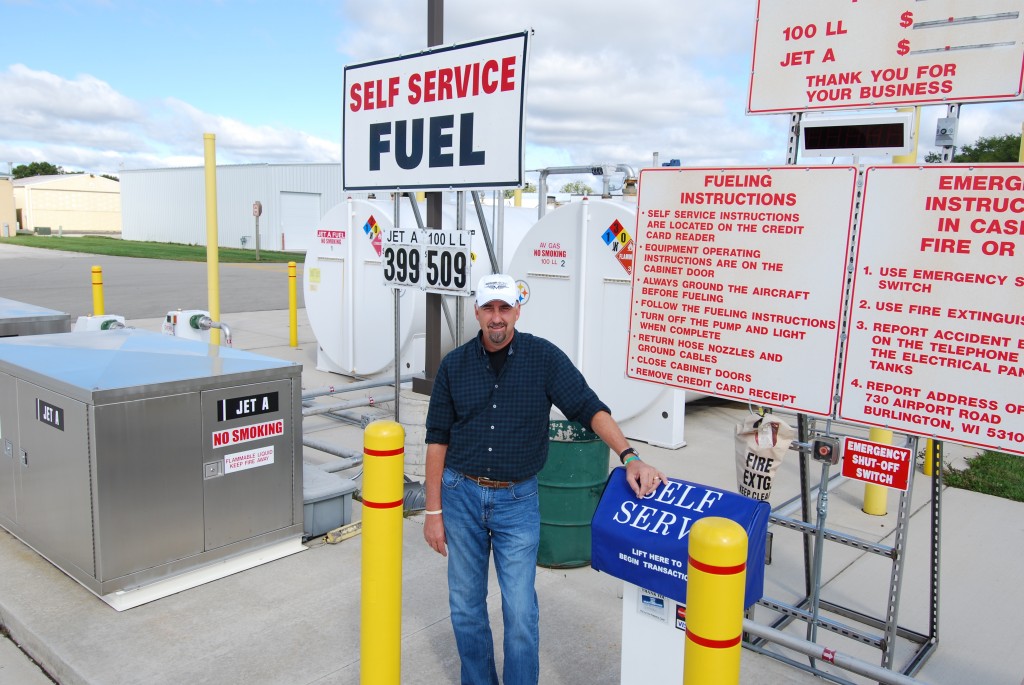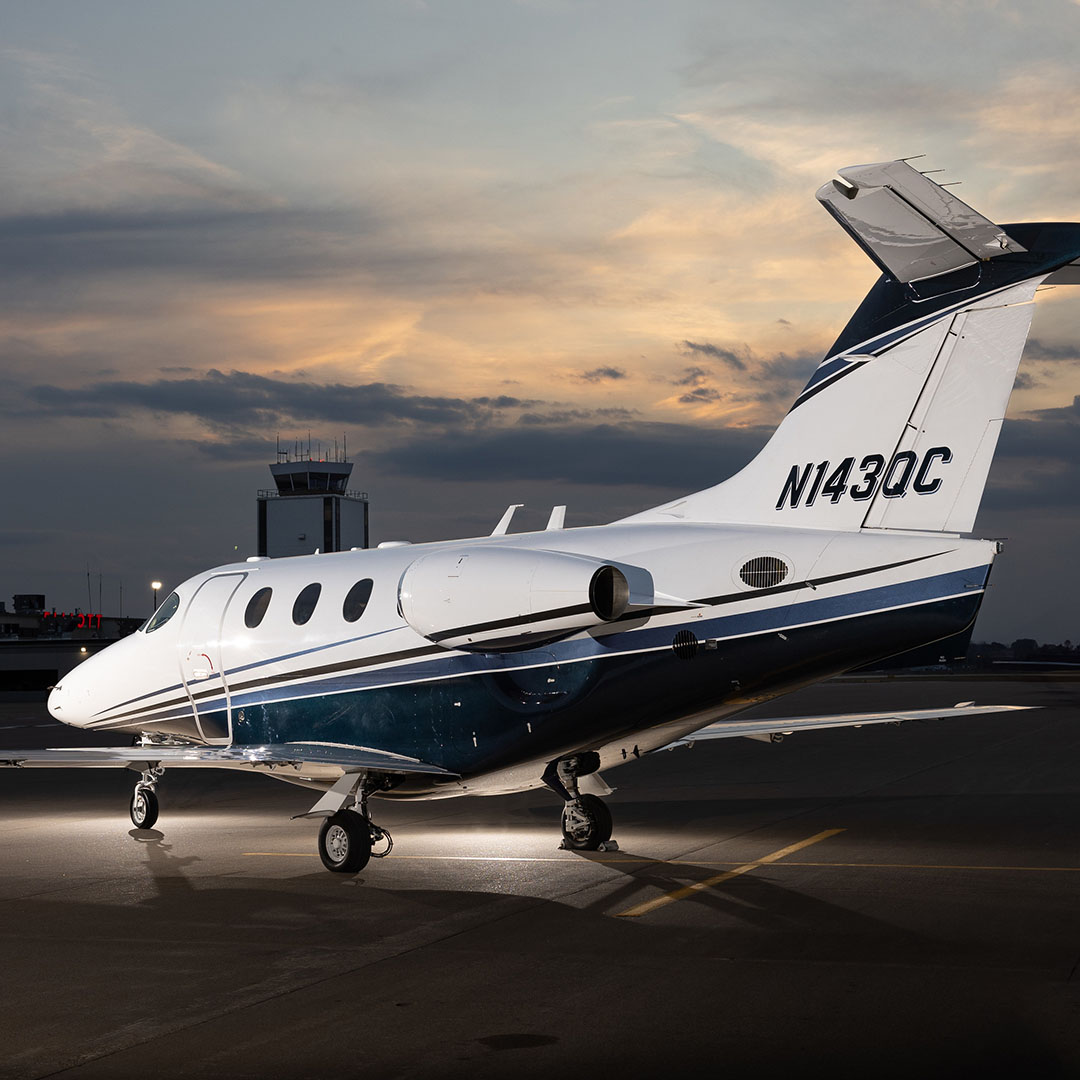Self-Serve Fuel Sales Keep Airport
Burlington Municipal Airport (BUU) in southeastern Wisconsin is a rare breed: a self-sustaining general aviation airport that’s turning a profit. And airport manager Gary Meisner and city administrator Kevin Lahner are proud of their feat.
“Small airports catch a lot of flak from taxpayers who perceive them as a rich man’s toy,” Meisner explains. “Times are changing and (we) have to figure out ways to generate revenue.”
| factsfigures
Project:Self-service Fuel Farm Location:Burlington (WI) Municipal Airport Cost:$250,000 Funding: Federal AIP (95%), state (2.5%), city (2.5%) Contractor:Interstate Pump & Tank Fuel Tanks:Flameshield(tm) Tank Capacity:12,000 gallons Fuel Cabinets:Interstate Pump & Tank; Sparling Corp. Credit Card Reader:QT Technologies Benefits:Lower fuel prices/higher sales volume |
At BUU, self-service fuel sales are keeping local taxpayers off the hook and allowing the airport to add to the city coffers each year.
But that wasn’t always the case.
Back in 2003, like many small municipal airports, BUU was operating in the red. The FBO that managed the airport was struggling to generate flight training revenue after 9/11, and the $5,000 to $8,000 the airport received per year from its six-cent-per-gallon flowage fee didn’t stretch far.
In 2004, the FBO left the airport, and the city hired Meisner as airport manager. Meisner had moved to Burlington in 2000 to consolidate his aviation businesses: Meisner Aircraft, Burlington Air Center and Knots-2-U Ltd.
When the city promptly tasked Meisner with making the airport self-sustaining, he identified fuel sales as the only hope. Land leases were BUU’s only other source of revenue, and hangar space was already maxed out and the airport’s few open acres were already being leased to farmers.
Red to Black
Given the landscape, Meisner suggested that the city take ownership of the airport’s fuel farm. The existing underground tanks were removed, and two 5,000-gallon aboveground tanks were installed (one for Jet A; one for 100 low lead). Initially, BUU hired a person to perform fueling operations, but it eventually switched to a 24-hour self-service system, which allowed the airport to lower its per gallon prices.
In 2008, the airport hired Interstate Pump & Tank to upgrade the fuel farm. The 5,000-gallon tanks were replaced by a pair of 12,000-gallon double-walled, epoxy-lined tanks. Three custom-designed cabinets from Sparling Corp. and an upgraded QT Technologies 3000 Site Minder Credit Card Reader were also installed.
Upgrading from 5,000- to 12,000-gallon tanks allowed the airport to begin taking full truck loads of fuel, which saved it 10 to 15 cents per gallon over the partial loads the smaller tanks were capable of taking.
The city, specifies Meisner, paid for only 2.5% of the $250,000 fuel farm project. Federal Airport Improvement Program funds took care of 95%, and the state paid the other 2.5%. The city owns the fuel farm, buys the fuel and marks it up 50 cents per gallon. Lately, its 50-cent-per-gallon profit has amounted to between $35,000 and $50,000 per year.
“The pot is growing,” notes Meisner. “We’ve got a revenue surplus that we can use for projects when they pop up. We have the funds to pay for our share of a project.”
Not surprisingly, Lahner considered the fuel farm project a “no-brainer.”
“If you’re going to get a project 95% paid for, while being able to reduce your costs long-term, it makes complete sense,” he explains. “We’re just taking advantage of the tools available to us.”
According to Meisner, competitively priced fuel has doubled traffic at BUU over the past four or five years. Of late, the airport has pumped about 80,000 to 100,000 gallons of 100 low lead and 40,000 to 50,000 gallons of Jet A per year.
“We have aircraft coming in specifically to refuel,” he reports. “We’re usually close to a dollar cheaper than any full-serve airport in the area … and also competitively priced with other self-service fuel in the area.”
Lower Expenses = Lower Prices
Not surprisingly, BUU’s fuel prices have drawn criticism from nearby airfields. Lahner, however, believes such criticism is unjustified.
“Some FBOs feel threatened by our system, and we’ve been accused of doing something wrong by charging lower prices for fuel,” he explains. “But it’s just simple math. We have cut our operating costs, so we’re able to charge less. We sell more fuel, and that puts the airport in the black.
“Cities are struggling,” he continues. “What we’re doing is not rocket science. From my perspective, cities with a small airport should take a look at our model because it really does work … If you have a service that isn’t self-sustaining, you really have to take a close look to see how you can make it a more self-sustaining enterprise; or you have to consider whether you need to provide that service.”
Meisner, too, is proud of the airport’s ability to support itself and not be a burden to taxpayers: “We don’t take any services from the city. They don’t do our plowing or mowing; we contract those services out. As far as I know, we’re the only strictly general aviation airport in the state that is self-supporting.”


